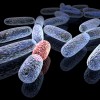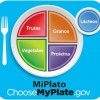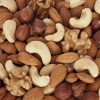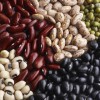 Every time you take your blood pressure, write down the date and time, the blood pressure measurement, and where it was taken (home, doctor’s office, etc.). Not only that, but include any comments your health care provider made and anything you would like to note, such as how you feel or medications you recently started or stopped. This 2-page fact sheet was written by Linda B. Bobroff and Leigh Ann Martin, and published by the UF Department of Family Youth and Community Sciences, October 2013.
Every time you take your blood pressure, write down the date and time, the blood pressure measurement, and where it was taken (home, doctor’s office, etc.). Not only that, but include any comments your health care provider made and anything you would like to note, such as how you feel or medications you recently started or stopped. This 2-page fact sheet was written by Linda B. Bobroff and Leigh Ann Martin, and published by the UF Department of Family Youth and Community Sciences, October 2013.
http://edis.ifas.ufl.edu/fy662
Category: Health & Nutrition
Understanding the New School Meal Standards
 If you have school-age children, you may have heard that the 2012 school year brought major changes to the meals children eat at school. All meals provided through the School Breakfast and National School Lunch Programs now must be consistent with the USDA’s Dietary Guidelines for Americans. This 6-page fact sheet was written by Jenna Norris, Karla P. Shelnutt, and Gail P. A. Kauwell, and published by the UF Department of Family Youth and Community Sciences, October 2013.
If you have school-age children, you may have heard that the 2012 school year brought major changes to the meals children eat at school. All meals provided through the School Breakfast and National School Lunch Programs now must be consistent with the USDA’s Dietary Guidelines for Americans. This 6-page fact sheet was written by Jenna Norris, Karla P. Shelnutt, and Gail P. A. Kauwell, and published by the UF Department of Family Youth and Community Sciences, October 2013.
http://edis.ifas.ufl.edu/fy1396
Eating Defensively: The Nutrition and Food Safety Benefits of Cooked Produce
 Current nutrition trends such as the “raw food diet” may lead consumers to believe that raw leafy vegetables are more nutritious than cooked vegetables, despite research showing that cooked vegetables make important nutritional contributions. This publication describes the nutrient retention and quality of cooked vegetables, explains why cooking vegetables is appropriate for consumers with food safety concerns, and provides tips for preparing cooked vegetables. This 4-page fact sheet was written by Morgan Dehnard, Amy Simonne, and Gail P. A. Kauwell, and published by the UF Department of Family Youth and Community Sciences, October 2013.
Current nutrition trends such as the “raw food diet” may lead consumers to believe that raw leafy vegetables are more nutritious than cooked vegetables, despite research showing that cooked vegetables make important nutritional contributions. This publication describes the nutrient retention and quality of cooked vegetables, explains why cooking vegetables is appropriate for consumers with food safety concerns, and provides tips for preparing cooked vegetables. This 4-page fact sheet was written by Morgan Dehnard, Amy Simonne, and Gail P. A. Kauwell, and published by the UF Department of Family Youth and Community Sciences, October 2013.
http://edis.ifas.ufl.edu/fy1395
Preventing Foodborne Illness: E. coli O157:H7
 Escherichia coli is a bacterium found in the digestive system of healthy humans and animals and transmitted through fecal contamination. There are hundreds of known E. coli strains, with E. coli O157:H7 being the most recognized. This enterohemorrhagic E. coli (or EHEC) strain is responsible for an estimated 63,153 cases of infection and 20 deaths in the United States annually, and causes approximately $255 million in losses each year. E. coli are found everywhere in the environment but mostly occupy animal surfaces and digestive systems, making it important to thoroughly wash anything that comes into contact with these surfaces. This 5-page fact sheet was written by Keith R. Schneider, Renée Goodrich Schneider, Michael A. Hubbard, and Alexandra Chang, and published by the UF Department of Food Science and Human Nutrition, October 2013.
Escherichia coli is a bacterium found in the digestive system of healthy humans and animals and transmitted through fecal contamination. There are hundreds of known E. coli strains, with E. coli O157:H7 being the most recognized. This enterohemorrhagic E. coli (or EHEC) strain is responsible for an estimated 63,153 cases of infection and 20 deaths in the United States annually, and causes approximately $255 million in losses each year. E. coli are found everywhere in the environment but mostly occupy animal surfaces and digestive systems, making it important to thoroughly wash anything that comes into contact with these surfaces. This 5-page fact sheet was written by Keith R. Schneider, Renée Goodrich Schneider, Michael A. Hubbard, and Alexandra Chang, and published by the UF Department of Food Science and Human Nutrition, October 2013.
http://edis.ifas.ufl.edu/fs097
Preventing Foodborne Illness: E. coli “The Big Six”
 Escherichia coli is a bacterium usually found in the digestive system of healthy humans and animals and transmitted through fecal contamination. There are hundreds of known E. coli strains, with E. coli O157:H7 being the most widely recognized because of the severe illness it causes. In addition to E. coli O157:H7, the U.S. Food and Drug Administration has identified six serogroups (or “strains”), known as the “big six,” which includes E. coli O26, O45, O103, O111, O121, and O145. These are the most commonly seen types of E. coli found in food in the United States that are not O157:H7, and they cause approximately 37,000 cases per year in the United States. This 5-page fact sheet was written by Susanna Richardson, Renée Goodrich Schneider, and Keith R. Schneider, and published by the UF Department of Food Science and Human Nutrition, October 2013.
Escherichia coli is a bacterium usually found in the digestive system of healthy humans and animals and transmitted through fecal contamination. There are hundreds of known E. coli strains, with E. coli O157:H7 being the most widely recognized because of the severe illness it causes. In addition to E. coli O157:H7, the U.S. Food and Drug Administration has identified six serogroups (or “strains”), known as the “big six,” which includes E. coli O26, O45, O103, O111, O121, and O145. These are the most commonly seen types of E. coli found in food in the United States that are not O157:H7, and they cause approximately 37,000 cases per year in the United States. This 5-page fact sheet was written by Susanna Richardson, Renée Goodrich Schneider, and Keith R. Schneider, and published by the UF Department of Food Science and Human Nutrition, October 2013.
http://edis.ifas.ufl.edu/fs233
MiPlato Serie 10 Consejos de Educación en Nutrición
 Despues de introducir MiPlato en junio de 2011, el Departamento de Agricultura de los EEUU (USDA) desarolló una seria de hojas informativas para ayudar a los consumidores utilizar los consejos dietéticos de los Pautas Dietéticas de 2010. En 2013, el USDA comenzó proveer las hojas de consejos en Español. Estas hojas de consejos se distribuyen por el UF/IFAS para la facultad de Extensión, los profesionales de salud, y los consumidores. This 33-page fact sheet was written by USDA Centro para Políticas y Promoción de la Nutrición, con una introducción por Linda B. Bobroff, and published by the UF Department of Family Youth and Community Sciences, October 2013.
Despues de introducir MiPlato en junio de 2011, el Departamento de Agricultura de los EEUU (USDA) desarolló una seria de hojas informativas para ayudar a los consumidores utilizar los consejos dietéticos de los Pautas Dietéticas de 2010. En 2013, el USDA comenzó proveer las hojas de consejos en Español. Estas hojas de consejos se distribuyen por el UF/IFAS para la facultad de Extensión, los profesionales de salud, y los consumidores. This 33-page fact sheet was written by USDA Centro para Políticas y Promoción de la Nutrición, con una introducción por Linda B. Bobroff, and published by the UF Department of Family Youth and Community Sciences, October 2013.
http://edis.ifas.ufl.edu/fy1399
Rat lungworm Angiostrongylus cantonensis (Chen, 1935) (Nematoda: Strongylida: Metastrongylida)
 Like many pest and disease problems, rat lungworm has been slowly spreading around the world. First described by Chen from rats in China, the medical significance of this parasite was overlooked until 1944 when it was found infecting humans in Taiwan. Even then, because the report was published in Japanese, its importance remained largely unknown. In 1955, Mackerras and Sandars found this nematode among rats in Brisbane, Australia, and described its life cycle, including the importance of its molluscan intermediate hosts. This 4-page fact sheet was written by John Capinera and Heather S. Walden, and published by the UF Department of Entomology and Nematology, September 2013.
Like many pest and disease problems, rat lungworm has been slowly spreading around the world. First described by Chen from rats in China, the medical significance of this parasite was overlooked until 1944 when it was found infecting humans in Taiwan. Even then, because the report was published in Japanese, its importance remained largely unknown. In 1955, Mackerras and Sandars found this nematode among rats in Brisbane, Australia, and described its life cycle, including the importance of its molluscan intermediate hosts. This 4-page fact sheet was written by John Capinera and Heather S. Walden, and published by the UF Department of Entomology and Nematology, September 2013.
http://edis.ifas.ufl.edu/in1007
Healthy Living: High Blood Pressure
 High blood pressure is increased pressure of blood inside the blood vessels. Too much pressure causes more work for the heart. Another name for high blood pressure is hypertension. About one in three American adults has hypertension and about half of them do not know they have this health problem. This 2-page fact sheet was written by Linda B. Bobroff and Leigh Ann Martin, and published by the UF Department of Family Youth and Community Sciences, September 2013.
High blood pressure is increased pressure of blood inside the blood vessels. Too much pressure causes more work for the heart. Another name for high blood pressure is hypertension. About one in three American adults has hypertension and about half of them do not know they have this health problem. This 2-page fact sheet was written by Linda B. Bobroff and Leigh Ann Martin, and published by the UF Department of Family Youth and Community Sciences, September 2013.
http://edis.ifas.ufl.edu/fy684
Mindfulness: An Introduction
 Learning to be mindful is a powerful skill that can help you face the stresses of day-to-day life and improve both your psychological and physical health. Because you don’t need any equipment to practice mindfulness, you can practice it discreetly anywhere, at any time. This 6-page fact sheet was written by Parth Naik, Victor Harris, and Larry Forthun, and published by the UF Department of Family Youth and Community Sciences, September 2013.
Learning to be mindful is a powerful skill that can help you face the stresses of day-to-day life and improve both your psychological and physical health. Because you don’t need any equipment to practice mindfulness, you can practice it discreetly anywhere, at any time. This 6-page fact sheet was written by Parth Naik, Victor Harris, and Larry Forthun, and published by the UF Department of Family Youth and Community Sciences, September 2013.
http://edis.ifas.ufl.edu/fy1381
Facts About Fluoride
 Fluoride is important for healthy bones and teeth. It increases the density of bones and also can stimulate the growth of new bone. Fluoride increases the amount of minerals in our teeth and even can reverse the progression of dental cavities. People who don’t get enough fluoride have much greater rates of dental decay and cavities than those who get enough fluoride. Due to water fluoridation, almost one-half of American children have never had a cavity in their permanent teeth. This 2-page fact sheet was written by Anne Kendall [Casella], and published by the UF Department of Family Youth and Community Sciences, July 2013.
Fluoride is important for healthy bones and teeth. It increases the density of bones and also can stimulate the growth of new bone. Fluoride increases the amount of minerals in our teeth and even can reverse the progression of dental cavities. People who don’t get enough fluoride have much greater rates of dental decay and cavities than those who get enough fluoride. Due to water fluoridation, almost one-half of American children have never had a cavity in their permanent teeth. This 2-page fact sheet was written by Anne Kendall [Casella], and published by the UF Department of Family Youth and Community Sciences, July 2013.
http://edis.ifas.ufl.edu/fy887
Facts About Vitamin B6
 Vitamin B6, also called pyridoxine, is a water-soluble vitamin needed to break down the protein we eat. This vitamin is used by our bodies to make important proteins, and it helps our muscles use energy. It also helps make brain chemicals that tell the systems in our bodies what to do. This 2-page fact sheet was written by Anne Kendall, and published by the UF Department of Family Youth and Community Sciences, July 2013.
Vitamin B6, also called pyridoxine, is a water-soluble vitamin needed to break down the protein we eat. This vitamin is used by our bodies to make important proteins, and it helps our muscles use energy. It also helps make brain chemicals that tell the systems in our bodies what to do. This 2-page fact sheet was written by Anne Kendall, and published by the UF Department of Family Youth and Community Sciences, July 2013.
http://edis.ifas.ufl.edu/fy213
Symptoms of Diabetes
 Type 2 diabetes is a growing health concern for children and adults in the United States. Diabetes that is uncontrolled can lead to blindness, kidney disease, heart disease, and amputations. Early diagnosis is critical! If you have any of the symptoms described in this fact sheet, see your health care provider right away! This 1-page fact sheet was written by Linda B. Bobroff, and published by the UF Department of Family Youth and Community Sciences, July 2013.
Type 2 diabetes is a growing health concern for children and adults in the United States. Diabetes that is uncontrolled can lead to blindness, kidney disease, heart disease, and amputations. Early diagnosis is critical! If you have any of the symptoms described in this fact sheet, see your health care provider right away! This 1-page fact sheet was written by Linda B. Bobroff, and published by the UF Department of Family Youth and Community Sciences, July 2013.
http://edis.ifas.ufl.edu/fy344
Facts about Magnesium
 Many Americans don’t get enough magnesium in their diets. But most healthy people do not have signs of deficiency even if their intake is low because the body stores this mineral. However, people who abuse alcohol, take certain diuretic drugs, or have kidney disease may be at risk for magnesium deficiency. Long-lasting diarrhea or vomiting also can cause a deficiency. Older adults often do not get enough magnesium in their diets. This 2-page fact sheet was written by Linda B. Bobroff and Jennifer Hillan, and published by the UF Department of Family Youth and Community Sciences, July 2013.
Many Americans don’t get enough magnesium in their diets. But most healthy people do not have signs of deficiency even if their intake is low because the body stores this mineral. However, people who abuse alcohol, take certain diuretic drugs, or have kidney disease may be at risk for magnesium deficiency. Long-lasting diarrhea or vomiting also can cause a deficiency. Older adults often do not get enough magnesium in their diets. This 2-page fact sheet was written by Linda B. Bobroff and Jennifer Hillan, and published by the UF Department of Family Youth and Community Sciences, July 2013.
http://edis.ifas.ufl.edu/fy1088
Facts about Zinc
 Zinc deficiency can affect the immune system, cognitive function, and growth in children. Severe zinc deficiency can cause diarrhea, hair loss, poor appetite, skin disorders, impotence, and changes in taste. People who drink alcohol in excess are at high risk for zinc deficiency (and other health problems). This 2-page fact sheet was written by Linda B. Bobroff, and published by the UF Department of Family Youth and Community Sciences, July 2013.
Zinc deficiency can affect the immune system, cognitive function, and growth in children. Severe zinc deficiency can cause diarrhea, hair loss, poor appetite, skin disorders, impotence, and changes in taste. People who drink alcohol in excess are at high risk for zinc deficiency (and other health problems). This 2-page fact sheet was written by Linda B. Bobroff, and published by the UF Department of Family Youth and Community Sciences, July 2013.
http://edis.ifas.ufl.edu/fy218
Living with Diabetes: Keeping Track of Your Blood Glucose
 Living with diabetes involves setting goals, adjusting your lifestyle to meet your treatment goals, evaluating your progress, and changing practices as needed. One key goal of diabetes management is to attain glycemic (blood glucose) control to reduce the risk of health complications. Healthy lifestyle practices, such as eating well, engaging in physical activity, and using medications as prescribed, contribute to glycemic control and to an overall healthy life. This 3-page fact sheet was written by Linda B. Bobroff, and published by the UF Department of Family Youth and Community Sciences, June 2013.
Living with diabetes involves setting goals, adjusting your lifestyle to meet your treatment goals, evaluating your progress, and changing practices as needed. One key goal of diabetes management is to attain glycemic (blood glucose) control to reduce the risk of health complications. Healthy lifestyle practices, such as eating well, engaging in physical activity, and using medications as prescribed, contribute to glycemic control and to an overall healthy life. This 3-page fact sheet was written by Linda B. Bobroff, and published by the UF Department of Family Youth and Community Sciences, June 2013.
http://edis.ifas.ufl.edu/fy1144
Healthy Eating: Calcium / Alimentación Saludable: Calcio
 Calcium is the major mineral found in your bones and teeth. Many older adults don’t get enough calcium from the foods they eat. This can lead to bone loss and the bone disease osteoporosis. Osteoporosis puts people at high risk for bone fractures. These 1-page, large print fact sheets were written by Linda B. Bobroff, and published by the UF Department of Family Youth and Community Sciences, June 2013.
Calcium is the major mineral found in your bones and teeth. Many older adults don’t get enough calcium from the foods they eat. This can lead to bone loss and the bone disease osteoporosis. Osteoporosis puts people at high risk for bone fractures. These 1-page, large print fact sheets were written by Linda B. Bobroff, and published by the UF Department of Family Youth and Community Sciences, June 2013.
English: http://edis.ifas.ufl.edu/fy057
Spanish: http://edis.ifas.ufl.edu/fy058
Benefits of Family Meals (FCS2324/FY1362)
 Over the past 30 years obesity among children has increased. One way to help youth make healthy food choices is by creating healthy eating choices and habits at home, starting with family meals. When parents value family dinners, children are likely to view family dinners as important. Family meals can provide important examples to show children what foods are good to eat and how much of the good foods they should eat. This 5-page fact sheet was written by Varnessa McCray, Victor W. Harris, and Martie Gillen, and published by the UF Department of Family Youth and Community Sciences, April 2013.
Over the past 30 years obesity among children has increased. One way to help youth make healthy food choices is by creating healthy eating choices and habits at home, starting with family meals. When parents value family dinners, children are likely to view family dinners as important. Family meals can provide important examples to show children what foods are good to eat and how much of the good foods they should eat. This 5-page fact sheet was written by Varnessa McCray, Victor W. Harris, and Martie Gillen, and published by the UF Department of Family Youth and Community Sciences, April 2013.
http://edis.ifas.ufl.edu/fy1362
Beans, Peas, and Lentils: Health Benefits (FSHN1306/FS229)
 Bean, peas, and lentils are known collectively as legumes or pulses. Beans are great sources of many nutrients, including protein, fiber, and potassium. They can be placed either in the vegetable group or the protein group of MyPlate. If you have consumed enough protein choices, then you can count them in the vegetable group, and vice versa. This 2-page fact sheet was written by Lakshmi Mahan, Lauren Foster, and Wendy J. Dahl, and published by the UF Department of Food Science and Human Nutrition, May 2013.
Bean, peas, and lentils are known collectively as legumes or pulses. Beans are great sources of many nutrients, including protein, fiber, and potassium. They can be placed either in the vegetable group or the protein group of MyPlate. If you have consumed enough protein choices, then you can count them in the vegetable group, and vice versa. This 2-page fact sheet was written by Lakshmi Mahan, Lauren Foster, and Wendy J. Dahl, and published by the UF Department of Food Science and Human Nutrition, May 2013.
http://edis.ifas.ufl.edu/fs229
El sobrepeso y el mantenimiento de la perdida de peso (FSHN1304S/FS228)
 Para muchas personas, la pérdida de peso es una batalla crónica. Las dietas populares a menudo son poco exitosas porque no se pueden seguir de forma permanente. No hay una dieta mágica que le pueda hacer bajar de peso inmediatamente, pero a continuación se enumeran algunos buenos consejos para la pérdida de peso de una manera estable y de largo plazo. This 3-page fact sheet was written by Anne Mathews, Lauren Foster, and Wendy Dahl, and published by the UF Department of Food Science and Human Nutrition, April 2013.
Para muchas personas, la pérdida de peso es una batalla crónica. Las dietas populares a menudo son poco exitosas porque no se pueden seguir de forma permanente. No hay una dieta mágica que le pueda hacer bajar de peso inmediatamente, pero a continuación se enumeran algunos buenos consejos para la pérdida de peso de una manera estable y de largo plazo. This 3-page fact sheet was written by Anne Mathews, Lauren Foster, and Wendy Dahl, and published by the UF Department of Food Science and Human Nutrition, April 2013.
http://edis.ifas.ufl.edu/fs228
De compras para la salud: Vegetales (FSHN1305/FS227)
 Escoger los vegetales correctos le ayudará a obtener los nutrientes que su cuerpo necesita cada día. Con tantas opciones, ir a comprar vegetales puede parecer una tarea difícil, pero no lo tiene que ser. Este artículo le ayudará a volverse un comprador inteligente de vegetales. This 3-page fact sheet was written by Ashley R. Kendall y Wendy Dahl, and published by the UF Department of Food Science and Human Nutrition, April 2013.
Escoger los vegetales correctos le ayudará a obtener los nutrientes que su cuerpo necesita cada día. Con tantas opciones, ir a comprar vegetales puede parecer una tarea difícil, pero no lo tiene que ser. Este artículo le ayudará a volverse un comprador inteligente de vegetales. This 3-page fact sheet was written by Ashley R. Kendall y Wendy Dahl, and published by the UF Department of Food Science and Human Nutrition, April 2013.
http://edis.ifas.ufl.edu/fs227